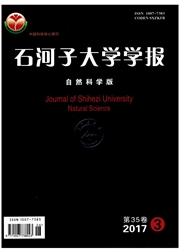

 中文摘要:
中文摘要:
为了解新疆北疆地区的家畜主要寄生蜱种的无形体和螺旋体的流行情况。采用聚合酶链反应(PCR)对采自家畜体表的546只成蜱(包括210只亚洲璃眼蜱,209只刻点血蜱,61只草原革蜱,40只边缘革蜱,和26只图兰扇头蜱)进行了无形体和螺旋体的核酸筛检。结果显示,无形体的总阳性率为53.48%(292/546),螺旋体的总阳性率为17.77%(97/546)。此外有15只蜱复合感染了两种病原的核酸。通过测序发现了嗜吞噬细胞无形体,绵羊无形体,伯氏疏螺旋体,伽氏疏螺旋体四种病原核酸,BLAST序列比对分析发现这四种病原核酸存在序列多样性。由此可知,无形体在新疆家畜寄生蜱中呈高流行态势,疏螺旋体呈散在分布,首次从边缘革蜱中检测到绵羊无形体核酸。在新疆等偏远的农村地区控制家畜体表寄生蜱数量以及蜱传病原散播具有紧迫性。
 英文摘要:
英文摘要:
The aim of this study was to determine the prevalence of Anaplasma and Borrelia in dominant ticks infecting domestic animals in north region of Xinjiang Uygur Autonomous Region(XUAR).Five hundreds and forty-six represented adult ticks from livestocks(including 210 Hyalomma asiaticum,209 Haemaphysalis punctata,61 Dermacentor nuttalli,40 D.marginatus and 26 Rhipicephalus turanicus) were tested by Polymerase Chain Reaction(PCR) for the nucleic acid presence of Anaplasma and Borrelia.Overall infectious prevalences were 53.48%(292/546) for Anaplasma spp.and 17.77%(97/546) for Borrelia spp.In addition,15 ticks(2.75%) were co-infected with Anaplasma and Borrelia.Four pathogens,named A.phagocytophilum,A.ovis,B.burgdorferi sensu stricto and B.garinii,were detected by PCR.The sequences of four tick-borne pathogens,in this study,showed genetic diversity by BLAST analysis.In northern region of XUAR,Anaplasma was highly prevalent in questing ticks from livestocks while the Borrelia in questing ticks was scattered.DNA of A.ovis,for the first time,was found in D.marginatus.It is vital to control tick abundance and tick-borne pathogens from livestocks especially in resource-poor rural communities,such as in XUAR.
 同期刊论文项目
同期刊论文项目
 同项目期刊论文
同项目期刊论文
 期刊信息
期刊信息
